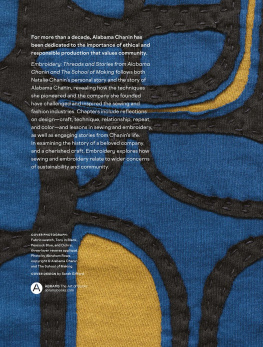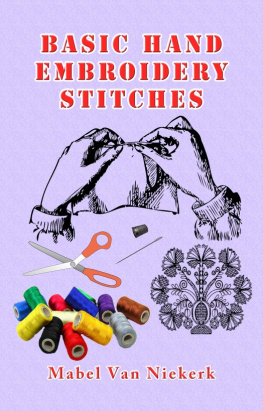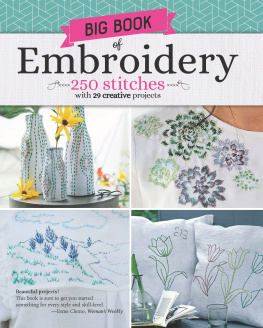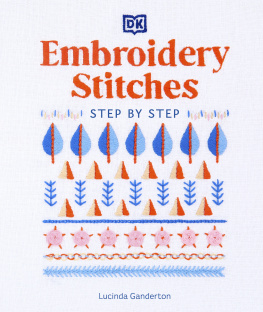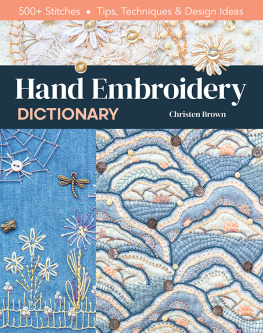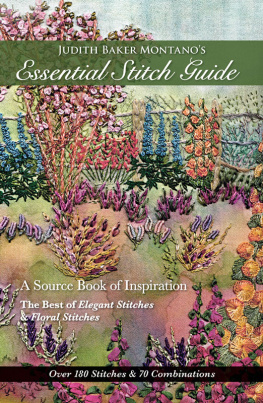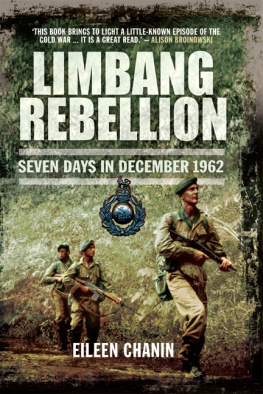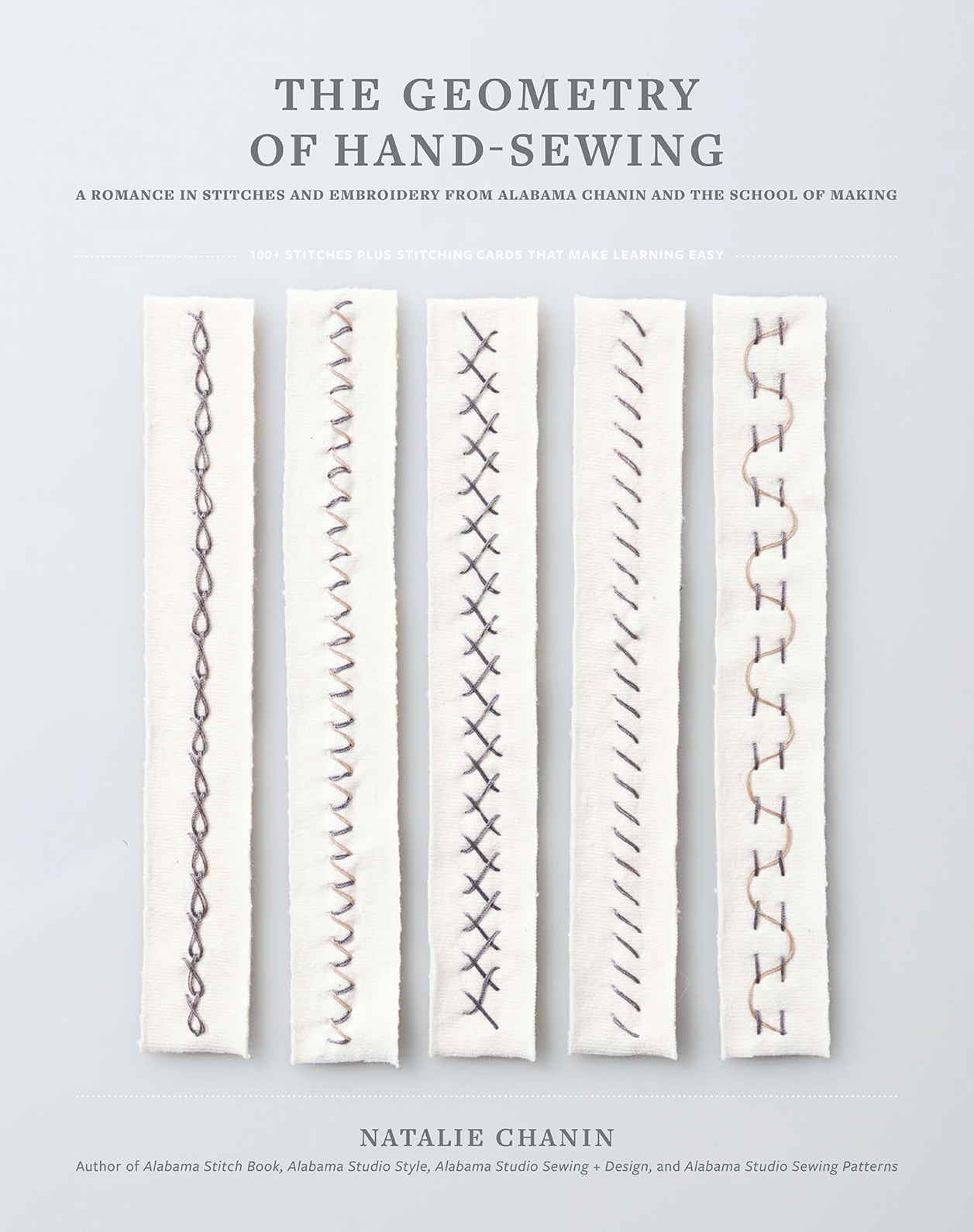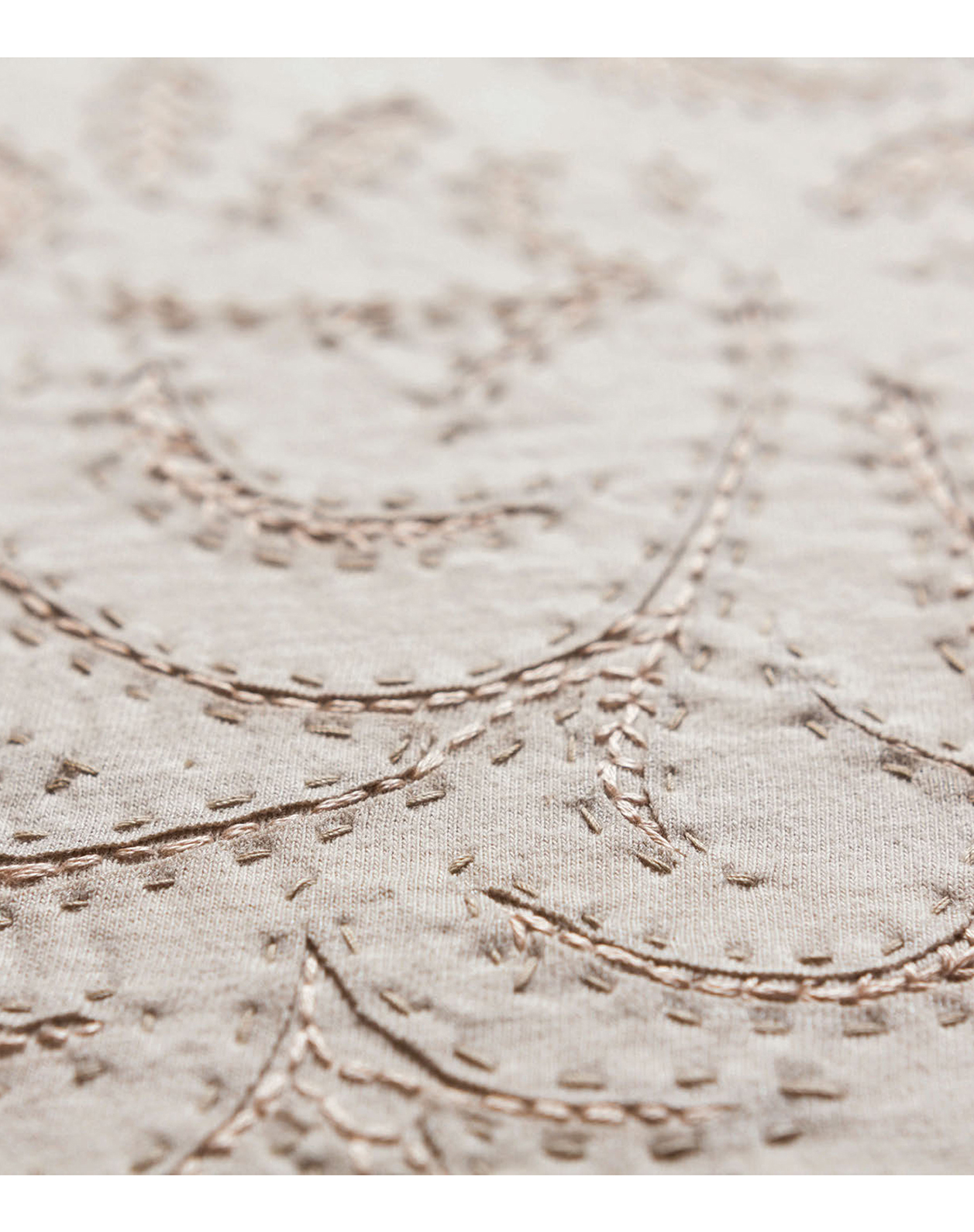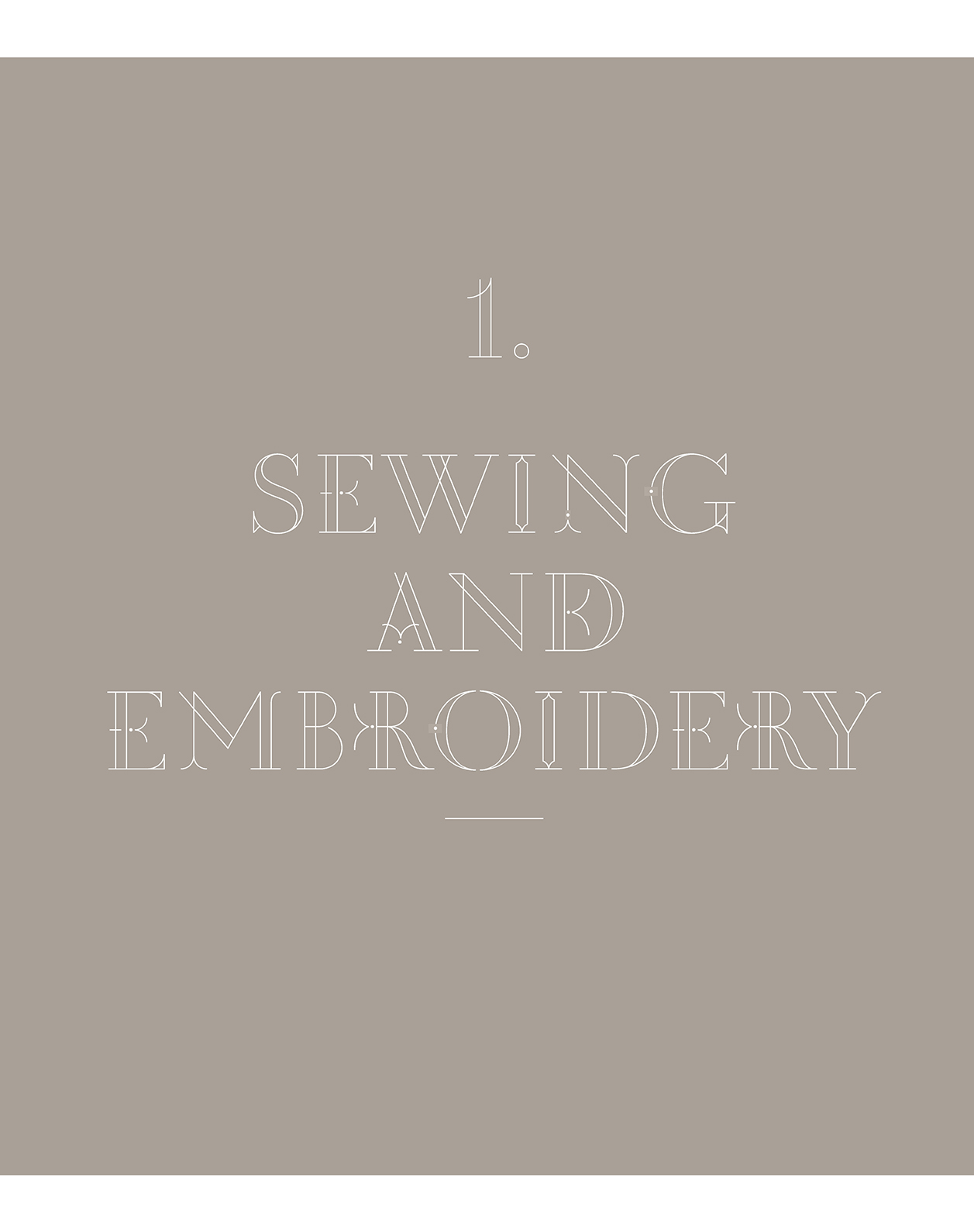
Embroidery and sewinglike the study of numbers and
shapesare as old as humankind. It seems that as soon as
human beings were able to conceive of twisting fibers into
yarns, they began manipulating those twisted fibers into fab-
rics. Even before the basics of making fabrics were under-
stood, humans were embellishing shelters, clothing, and
objects with patterns based on geometry. Some civilizations
tended toward the simplest and most austere uses of threads,
yarns, and ropes, while others strove for the most highly
evolved and elevated versions of embellishment imaginable,
including, in the most elaborate examples, embellishing gar-
ments with strands of spun gold and precious stones.
At my company Alabama Chanin, and now The School of
Making, weve developed our own style of stitched embellish-
ment that involves applying threads and flosses to fabrics
made from cotton fibers, primarily organic cotton jersey. In
this book, we share with you all that weve learned over the
years about stitches for you to use in your projects, those
inspired by our work and others. Weve taught these stitches
and techniques to hundreds of artisansboth young and
old. While we did not invent them, weve spent thousands of
hours exploring and expanding upon them.
In , we introduce our Stitching Cards as a way to
help you understand and practice basic stitches. In ,
we present the tools and materials that inspire and inform
our sewing and embroidery, and in , we show you
how to work the stitches. are about ways to
elaborate on the stitches presented in -
is
an index to make finding instructions for the stitches easy.
The act of making can change your life, help you become
a more informed consumer, and aid you in passing on impor-
tant knowledge to the next generation. I know that I am my
best self when I am making and sharing. I hope the lessons in
this book will instill you with confidence, deepen your love
for the arts of hand-sewing and embroidery, and inspire you
to share your love of making with others.
In the spring of 1973, my mother, who had recently earned a
masters degree in pure mathematics, introduced me to her
love of geometry through the book
The Dot and the Line: A
Romance in Lower Mathematics
by Norton Juster. A whimsi-
cal tale of love across divides,
The Dot and the Line
remains
one of my all-time favorites. It begins, Once upon a time
there was a sensible straight line who was hopelessly in love
with a dot. Youre the beginning and the end, the hub, the
core and the quintessence, he told her tenderly...
Im not a mathematician, but I am a designer who loves
geometry, that is, the relationship among points, lines, and
surfaces. I was never a stellar math student, but Ive always
had an intrinsic understanding of spatial relationships, and
this understanding serves me every day in my job as the cre-
ative director of The School of Making, the educational arm
of my fashion and lifestyle company Alabama Chanin.
Norton Juster dedicated
The Dot and the Line
to Euclid,
who is known in some circles as the father of geometry.
Around 300 B . C ., Euclid wrote his love letter to geometry
called
Elements
and this treatise became the basis for the
geometry we all learn as children, for explaining how points
and lines interact to form the shapes that create our world.
When we stitch by hand, we use geometry without realizing
it. Think of the dashes of a straight stitch moving down a
seam or around a circle; the points at which the thread enters
and exits the fabric create the linesor, in other words, the
geometryof our work.
While I promise you that this book is not a treatise on
Elements
or Euclidean geometry, I do consider it a love let-
ter to geometry as it pertains to stitching. Like most people,
I learned different stitches over time as I desired to use
themwithout thinking a lot about how they related to
geometryhowever, when my team and I started to look at
them closely and to compare them, we realized that they are
all based on a geometric grid system. We then developed the
Stitching Cards in this book based on these grids in order to
make learning the stitches as easy as childs play.
INTRODUCTION
ONCE UPON A TIME THERE WAS A SENSIBLE STRAIGHT LINE
WHO WAS HOPELESSLY IN LOVE WITH A DOT.
The Dot and the Line: A Romance in Lower Mathematics, by Norton Juster, 1963
THE GEOMETRY OF HAND-SEWING


